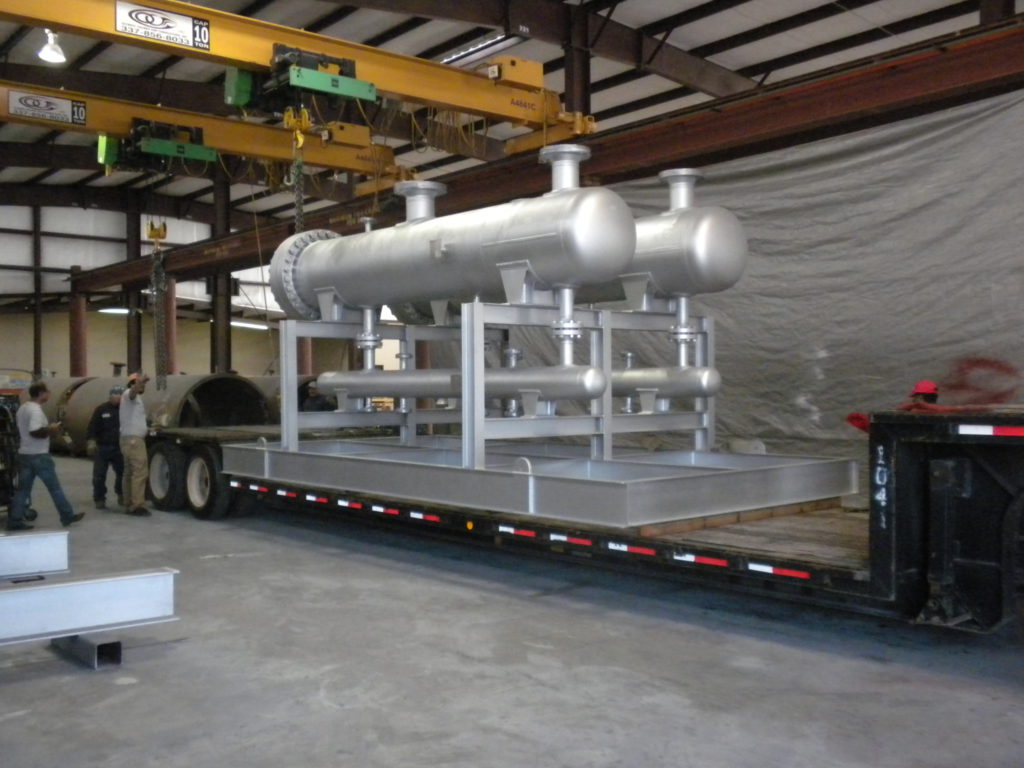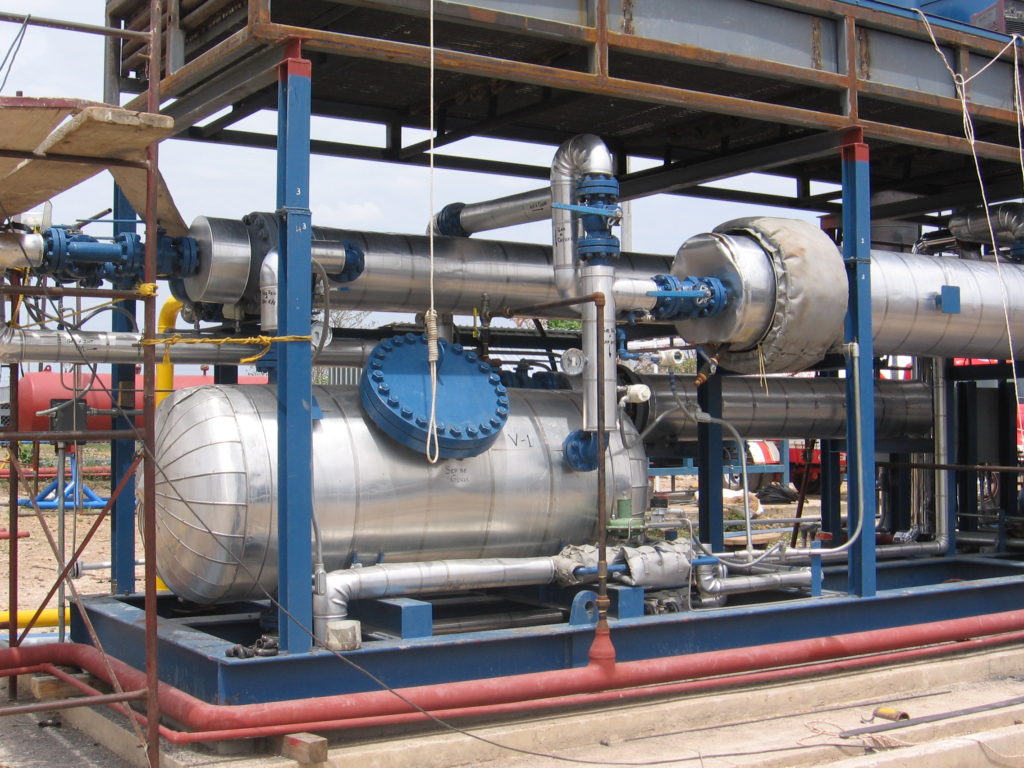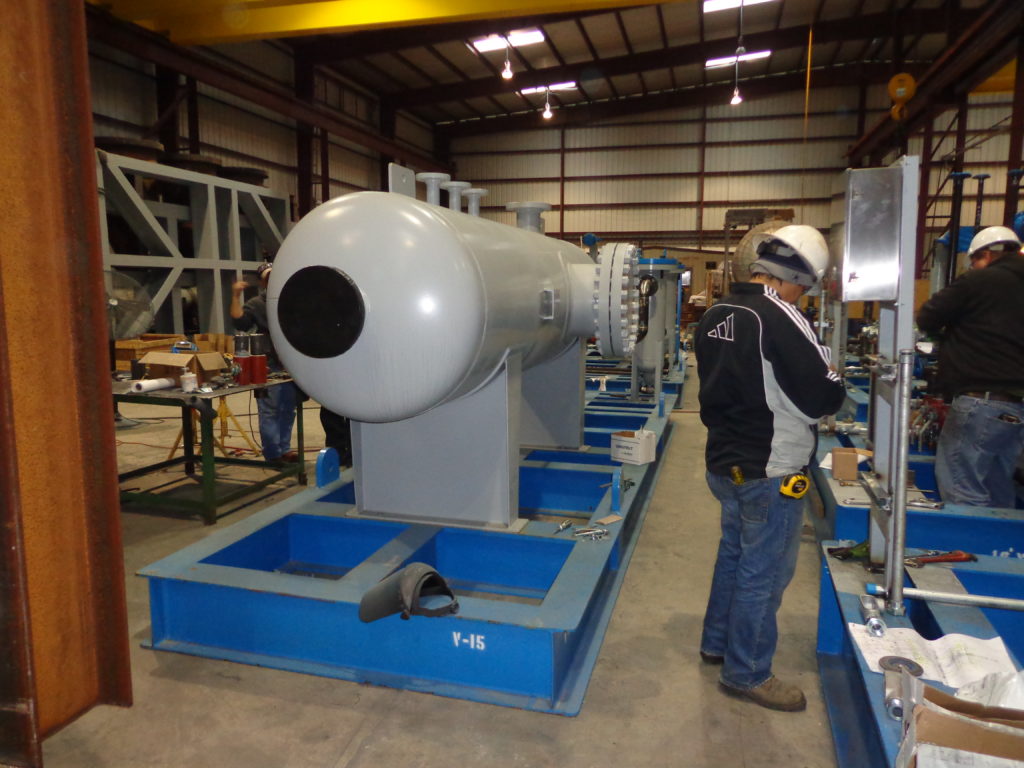
Oil and gas separators are crucial for oil and gas production. Separator design can be very sophisticated, relying on accurate temperature, pressure, gas and liquid density, residence time, and oil viscosity. There are many types of separating processes commonly used in industry.
- Two-phase separators
- Three-phase separators
- Coalescing filter separators
- Double-barrel horizontal separators

These separators will use cyclones, vane packs, mesh pad mist eliminators, and other types of plate packs.
Three-phase separators change with the gas-oil ratio (GOR), relative water to oil ratios, turndown percentage and pressure changes. Internal velocities including gas and liquid settling are critical. Three-phase separators, two-phase separators, and double barrel horizontal separators all require level controls. Since the separators have interned chambers with weirs, down comers, and filter coalescers, there is a need for external piping. The separators are pre-piped with the necessary manual and control valves. The option if local PLC control or central control is available.
Sep-Pro, being an ASME code shop, builds all the vessels and piping systems. Since the separators usually have heavy wall thicknesses, heat-treating is usually required. For corrosive environments the vessels can also be internally coated.
Advantages of Sep-Pro Oil and Gas Separators
- Customized design to match weir heights with actual gas-to-liquid ratio
- Custom materials for corrosion protection
- Customized control transmitter specification and PLC design
- Short delivery time
For more information about Sep-Pro Oil and Gas Separators, contact us today.

Certifications
Sep-Pro Systems, Inc. maintains certification with the American Society of Mechanical Engineers (ASME) for “U” stamped vessels and the National Board for “R” stamped repairs.

